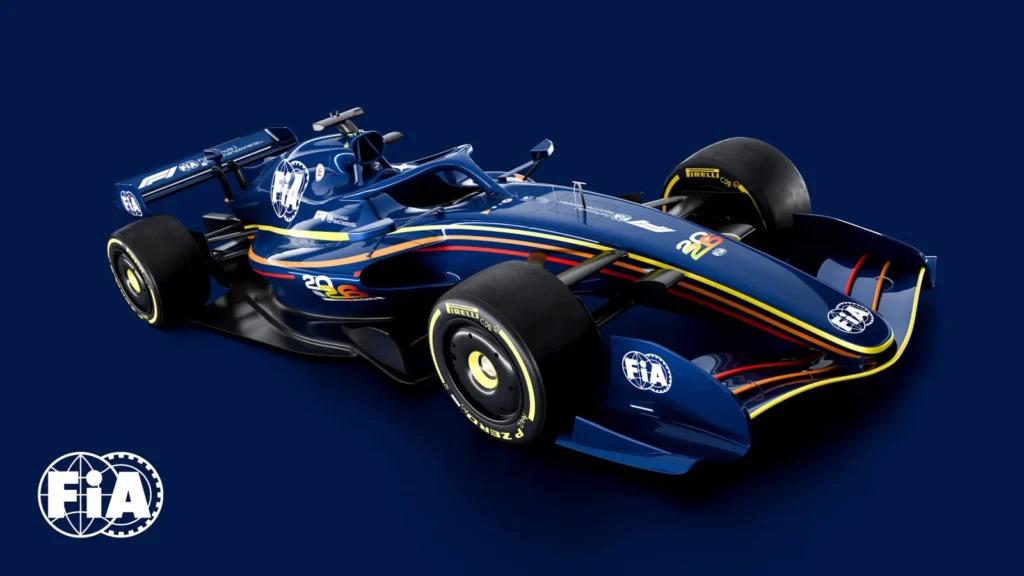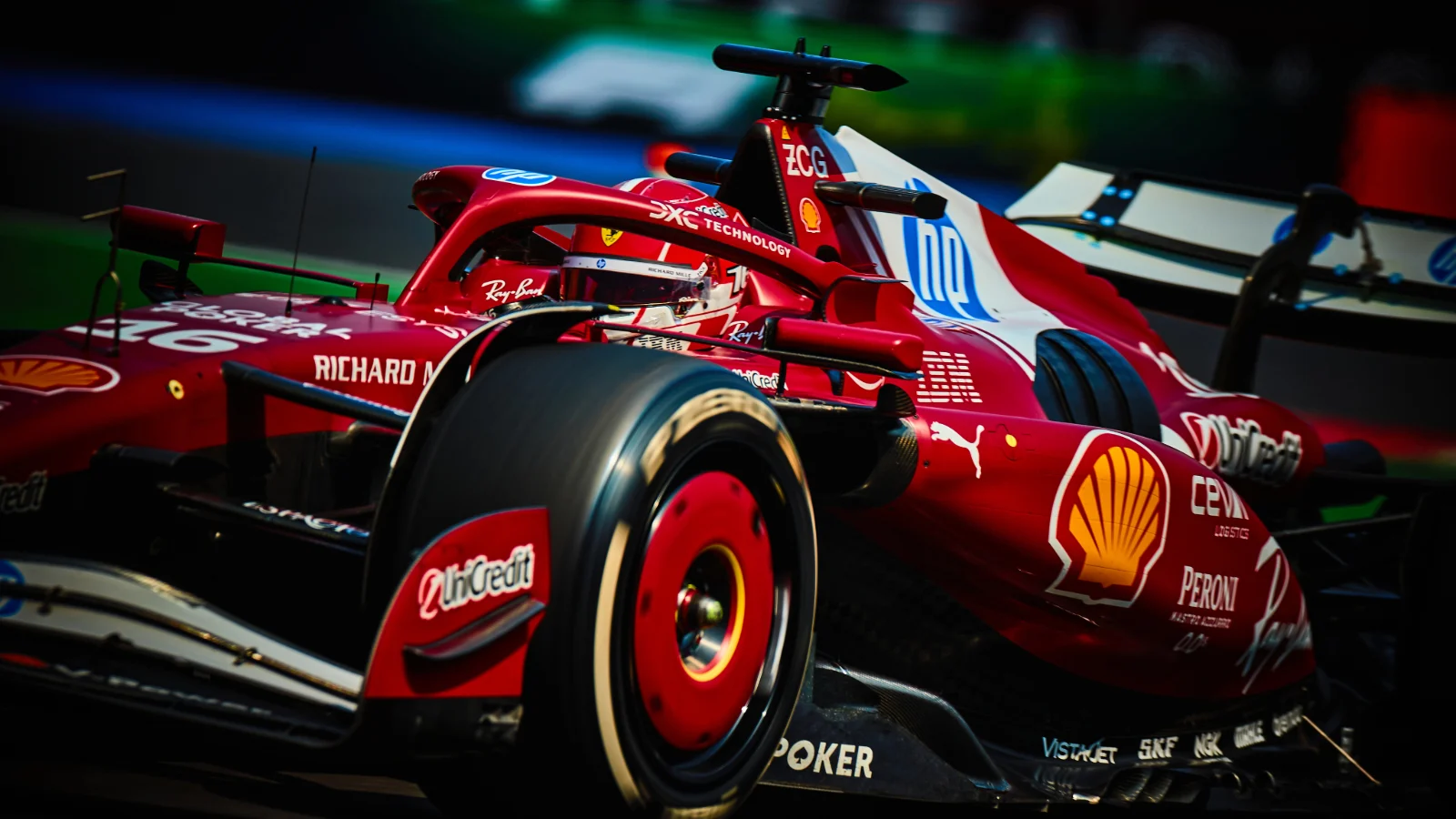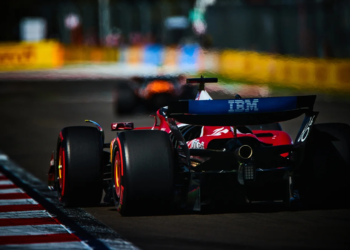Ferrari‘s upswing in competitiveness across the last two Grands Prix has reportedly lessened the number of planned radical changes to its 2026 Formula 1 car.
The Scuderia has not enjoyed the happiest of 2025s, with the team still yet to achieve a Grand Prix win, its only triumph coming through Lewis Hamilton at the China Sprint in March.
Its SF-25 challenger has been awash with a variety of issues that have prevented both Hamilton and Charles Leclerc from unlocking further potential from it, namely through its floor.
After the same weekend in China, Hamilton’s GP disqualification for excessive plank wear helped the team identify a problem that it has battled with since via redesigns and updates.
The floor, assisted by a too-pliable rear suspension, forbids the car from running at lower ride heights, causing a lack of variation in set-up.
However, the last two circuits – the Circuit of the Americas and Autodromo Hermanos Rodriguez – were particularly bumpy in nature, which threatened to lay bare its Achilles’ heel.
But it did not, as Leclerc took third and second places respectively, surprising most people, perhaps even the team.

Ferrari’s on-track results informing 2026 direction
This has now caused a rethink back at Maranello, and Project 678 – the working title of next year’s challenger – might not be as drastic in the way that was initially thought.
A report by La Gazzetta dello Sport has revealed that these recent results have ‘eliminated many doubts about some final choices that still had to be made for 2026′.
The initial plan was thought to be a switch back to a pushrod suspension, rather than the pullrod variant it has used this year.
But not only has its recent form caused the rethink, but the overhaul in rules for next year may have also played a part, given how different cars are going to be.
Along with the 50-50 split on ICE/electric power, another cornerstone of the drastic new regulations is further activity in the aero of the cars.
This may leave those at Ferrari thinking that going back to pushrod may just be as big a risk as its 2025 idea, and that continuity may be the best thing.
The publication suggests that ‘only the elastic response values of components such as torsion bars and heave dampers’ will be the only changes to the suspension layout.
Its only outside-the-box approach to the Project 678 is now thought to just be its ‘top-secret intake system,’ as part of an aluminium alloy cylinder head on its engine.
READ MORE – Why Lewis Hamilton is accepting of external criticism for below-par debut Ferrari F1 season










Discussion about this post